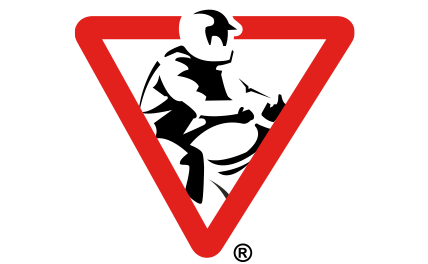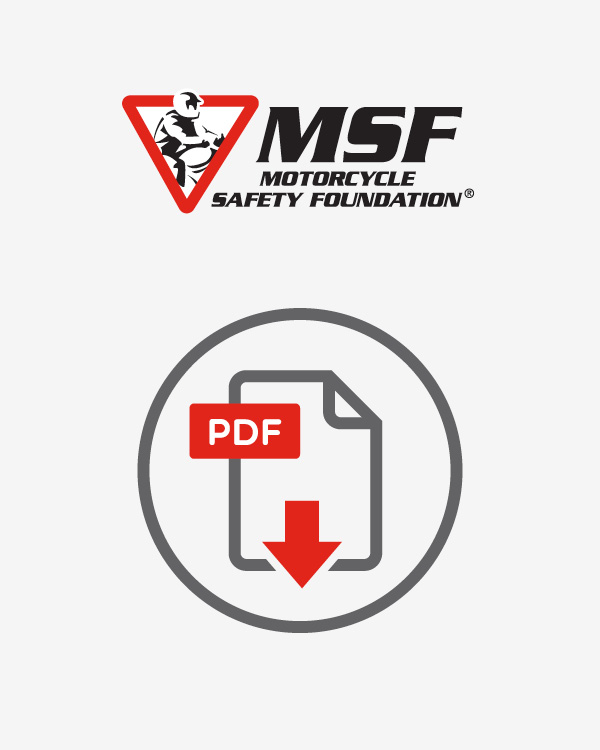General Guidelines for Riding a Motorcycle Safely
Be visible:
- Remember that motorists often have trouble seeing motorcycles.
- Make sure your headlight works and is on day and night.
- Use reflective strips or decals on your clothing and on your motorcycle.
- Avoid riding in the blind spots of cars and trucks.
- If possible, flash your brake light when you are slowing down and before stopping.
- Have an escape route in case a motorist doesn’t see you and violates your right-of-way.
Dress for safety:
- Wear a quality helmet and eye protection. A full-face helmet provides the best protection.
- Wear leather or other sturdy, protective clothing (jacket and pants); over-the-ankle boots; and gloves.
- Bright clothing and a light-colored helmet increase the chances of being seen.
- Dress for a crash as well as for the ride.
Apply effective mental strategies:
- Constantly search the road for changing conditions. Use the Search-Evaluate-Execute strategy (SEE) to assess and respond to hazards before you have to react to an emergency.
- Give yourself space and time as you search for traps and escape paths.
- Give other motorists time and space to respond to you.
- Use lane positioning to see and be seen.
- Search for vehicles that may turn across your path, especially at intersections.
- Use your turn signals for all turns and lane changes.
- Ride as if you’re invisible.
- Don’t ride when you are tired or under the influence of alcohol or other drugs.
- Know and follow the rules of the road.
Know your bike and how to use it:
- Study your motorcycle’s owner’s manual and make a habit of doing a pre-ride check.
- Visit msf-usa.org to take one of our online courses or review the wealth of information in our library.
- Get formal hands-on training and take refresher courses. Call 800.446.9227 or visit msf-usa.org to locate a Motorcycle Safety Foundation RiderCourseSM near you.
- Develop your riding techniques before venturing into traffic, especially emergency braking and swerving maneuvers. Practice often to keep your skills sharp.
- Corner within your skill limits. Aggressive cornering is a major cause of crashes.
- Know how to handle your bike in adverse conditions such as wet or sandy roads, high winds, and uneven surfaces.
Remember: Be mindful of collision traps and escape paths. People driving cars often don’t notice motorcycles. Ride within your skill level and situational limits.


